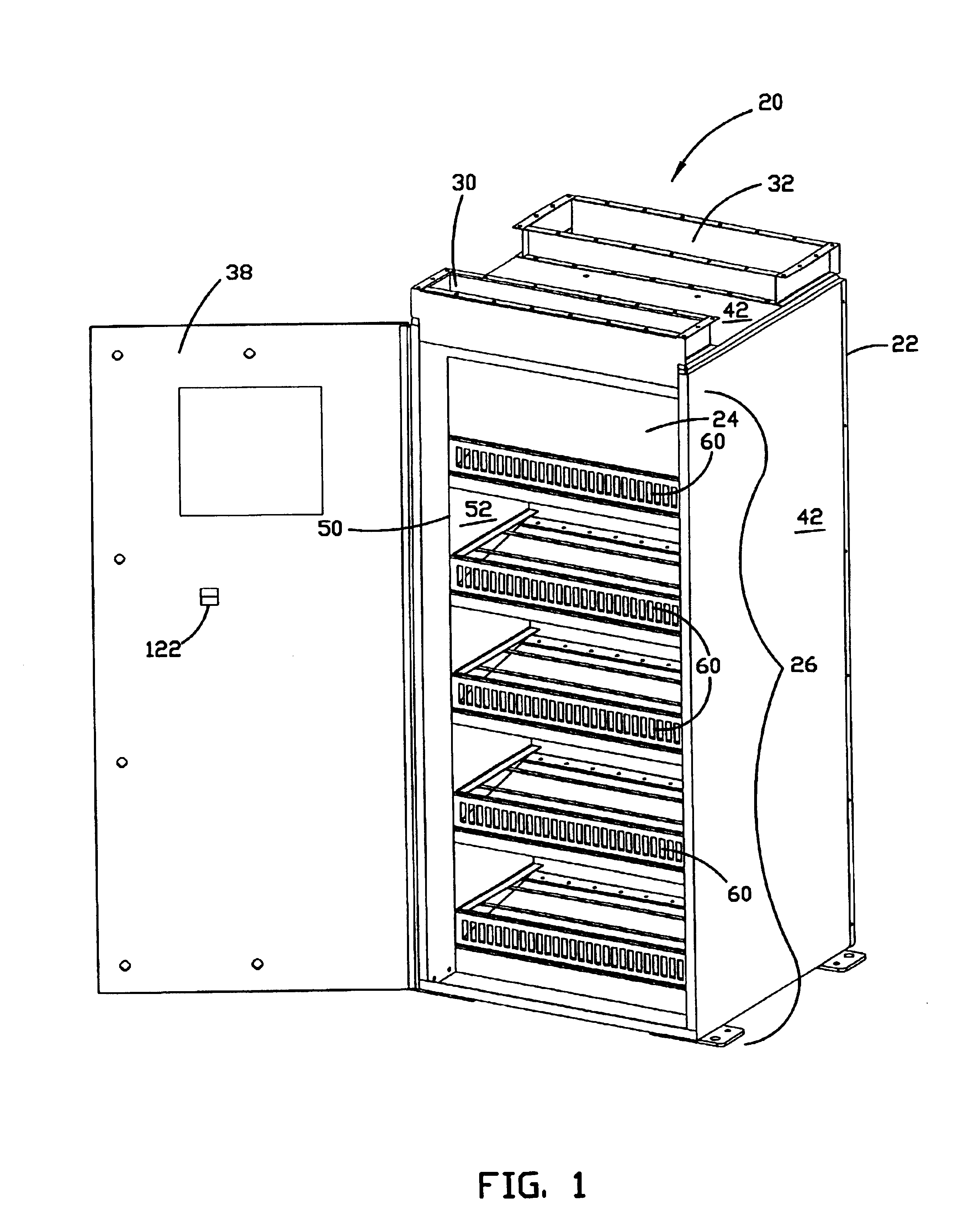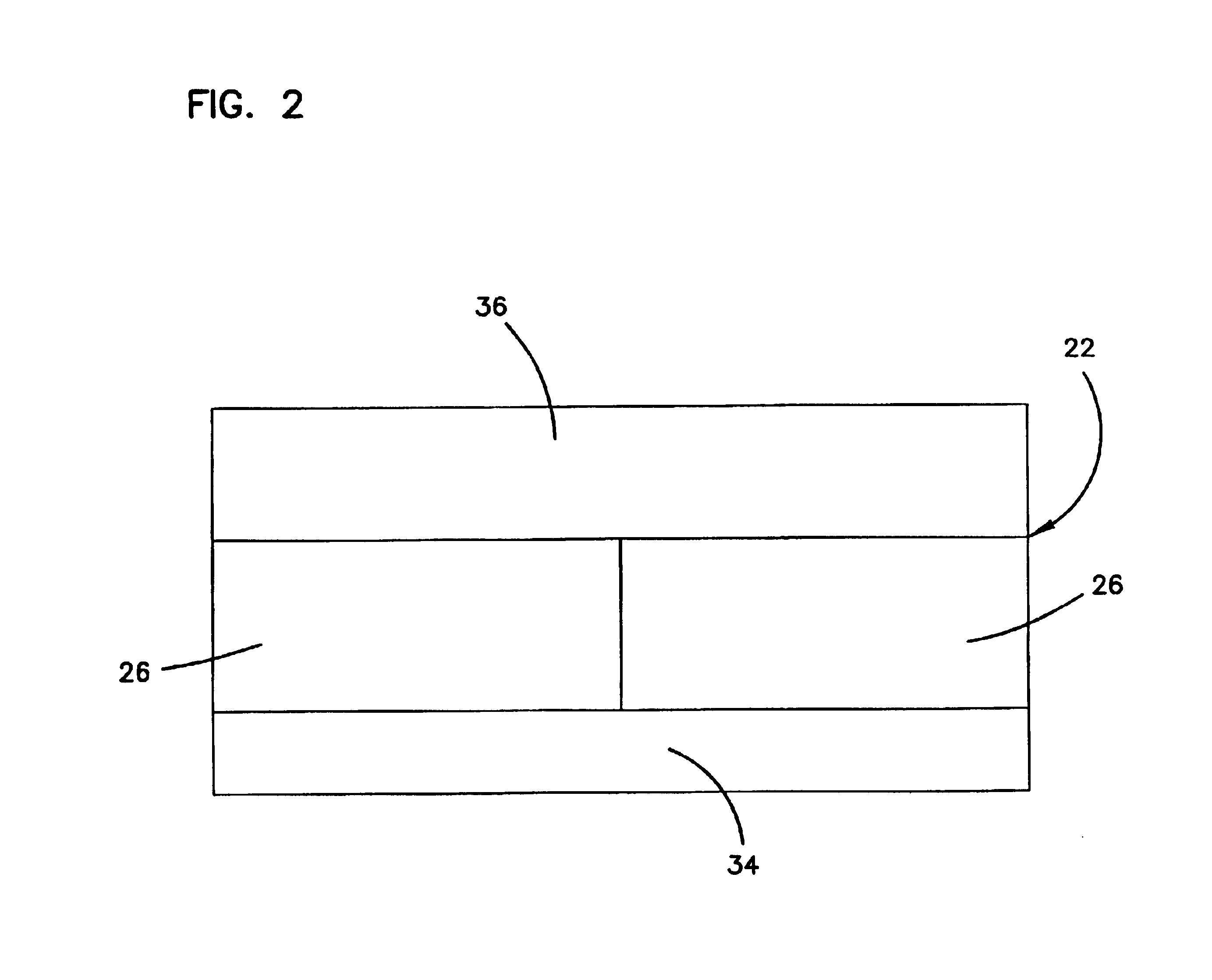Adsorption methods
a filtering system and adsorption bed technology, applied in the direction of photomechanical equipment, separation processes, instruments, etc., can solve the problems of contaminated air, use of these substances, and contaminating the air and other processes in the room, and other airborne contaminants are often present in the contaminated air
- Summary
- Abstract
- Description
- Claims
- Application Information
AI Technical Summary
Problems solved by technology
Method used
Image
Examples
Embodiment Construction
[0027]Referring now to the drawings, and in particular to FIG. 1, there is shown a counter flow adsorption module 22 of an adsorptive filtering system 20. Multiple modules 22 can be joined together to form a higher capacity adsorptive system 20, as shown in FIG. 2. The system 20 provides for a plurality of cartridge-type adsorption bed assemblies 24 receiving parallel flow with both vertical stacking shown most clearly in FIG. 1, as well as horizontal stacking, as shown in FIG. 2. With the present configuration, the height and width of the number of adsorption bed assemblies 24 can be designed to accommodate the filter and flow requirements of each particular system.
[0028]Referring again to FIG. 1, each module 22 includes an inlet 30 and an outlet 32 having flanges formed thereon for accepting a gasket and providing a sealed connection to upstream and downstream duct work. The counter flow adsorption module 22 includes an access door 38 pivoting along one vertical edge in a preferre...
PUM
| Property | Measurement | Unit |
|---|---|---|
| sizes | aaaaa | aaaaa |
| sizes | aaaaa | aaaaa |
| width | aaaaa | aaaaa |
Abstract
Description
Claims
Application Information
 Login to View More
Login to View More - R&D
- Intellectual Property
- Life Sciences
- Materials
- Tech Scout
- Unparalleled Data Quality
- Higher Quality Content
- 60% Fewer Hallucinations
Browse by: Latest US Patents, China's latest patents, Technical Efficacy Thesaurus, Application Domain, Technology Topic, Popular Technical Reports.
© 2025 PatSnap. All rights reserved.Legal|Privacy policy|Modern Slavery Act Transparency Statement|Sitemap|About US| Contact US: help@patsnap.com



